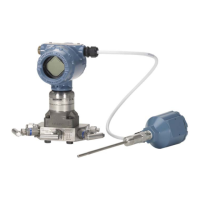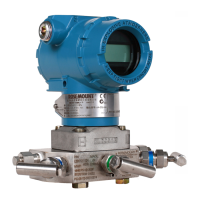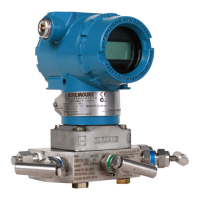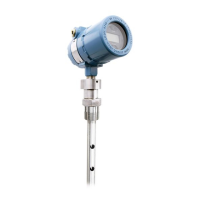Quick Start Guide
5
March 2018
1.4 Bolting considerations
If the transmitter installation requires assembly of the process flanges,
manifolds, or flange adaptors, follow these assembly guidelines to ensure a
tight seal for optimal performance characteristics of the transmitters. Use only
bolts supplied with the transmitter or sold by Emerson
™
as spare parts. Figure 2
illustrates common transmitter assemblies with the bolt length required for
proper transmitter assembly.
Figure 2. Common Transmitter Assemblies
A. Transmitter with coplanar flange
B. Transmitter with coplanar flange and optional flange adaptors
C. Transmitter with traditional flange and optional flange adaptors
D. Transmitter with coplanar flange and optional manifold and flange adaptors
Bolts are typically carbon steel or stainless steel. Confirm the material by
viewing the markings on the head of the bolt and referencing Table 1 on page 6.
If bolt material is not shown in Table 1 on page 6, contact the local Emerson
representative for more information.
Use the following bolt installation procedure:
1. Carbon steel bolts do not require lubrication and the stainless steel bolts are
coated with a lubricant to ease installation. However, no additional lubricant
should be applied when installing either type of bolt.
2. Finger-tighten the bolts.
3. Torque the bolts to the initial torque value using a crossing pattern.
See Table 1 on page 6 for initial torque value.
4. Torque the bolts to the final torque value using the same crossing pattern.
See Table 1 on page 6 for final torque value.
5. Verify the flange bolts are protruding through the isolator plate before
applying pressure.
A
4 × 1.75-in.
(44 mm)
D
4 × 1.75-in.
(44 mm)
4 × 2.25-in.
(57 mm)
C
4 × 1.75-in.
(44 mm)
4 × 1.50-in.
(38 mm)
B
4 × 2.88-in.
(73 mm)

